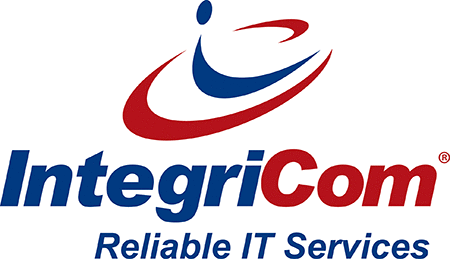Virtual CIO Services (vCIO & vCTO)
Fill your technology leadership gap with the affordable expertise and experience that comes from a IntegriCom fractional CTO/CIO. It’s not easy for company leaders to manage all the various core business challenges, let alone the challenges around technology. Sometimes just keeping the technology maintained and operational takes all the time from an IT team, leaving no time for strategic planning.

Virtual CIO Services (vCIO) In Atlanta Metro
Oftentimes businesses get stuck attempting to maintain outdated technology, which ends up hindering performance and ultimately leads to a less efficient and less productive company. The goal is to leverage technology to increase revenue and decrease expenses.
Effective IT strategies entail targeted focus, effective planning, and ongoing effort. Investing in our virtual CIO services (vCIO) saves you time and money.
Hire the IntegriCom team to fill this role for you and start maximizing the benefits of technology for your organization.


What Is A vCIO?
A vCIO (virtual chief information officer) is a dedicated resource that serves as a CIO on a flexible or fractional basis. Other names for a vCIO are Fractional CIO, CIO On-demand, or virtual CTO.
Small and medium sized businesses (SMBs) typically cannot justify hiring a full time CIO. In fact, they rarely need CIO services on a full-time basis. But they do need and can greatly benefit from CIO services.
The vCIO solution, or CIO as a Service, is the perfect way for these businesses to get the full benefit of a CIO, yet not have to pay the full-time price.

Why Do You Need A vCIO? Advantages Of A Virtual CIO
A vCIO provides many advantages and can circumvent many technological problems.
SMB Friendly
SMBs often have employees wearing many hats which can make it hard to truly focus on key things often causing them to be dropped. One proven solution to this common problem is to outsource areas to experts who can do the task quicker, cheaper, and more effective.
A vCIO is one example of this type of solution where the fractional CIO can provide the needed guidance and consistency needed in the business’s technology. The SMB employee can take the input, reporting, planning, and projections from the vCIO to effectively manage the company’s technology, all while balancing and taking care of their other areas of responsibility.
Disaster Planning
Disasters in your business happen when you least expect it. It is important for any company to have disaster plans in place. Countless SMBs have gone out of business for not taking this seriously. As stated previously, SMBs struggle with resources to spend time beyond the day-to-day demands.
So, it is important to engage in a proven process and framework to get this in place vs. trying to “recreate the wheel” themselves. A vCIO can bring this framework and process to the SMB giving them the needed steps in the event of a disaster.
Small Business IT Strategy Roadmap
If you don’t know where you are going, how will you get there? Any business needs good planning, and business technology is not excepted. It is important to know what role technology plays in a small business, and there needs to be clear evidence that the technology is providing increased revenue and/or reduced expenses.
A vCIO with a managed IT service provider delivers clear data for this as well as a mapped-out forward-looking effective IT strategy & roadmap.
Keeping Your Network Secure With A vCISO
A vCIO can provide vCISO (virtual chief information security officer) services as well, or depending on the level of need, bring in a vCISO, to help with deep level security defenses and planning.
Security defenses are important to any businesses and should be part of the technology strategy. But some companies may have the need for even deeper levels of services, and a vCISO is an effective and affordable way to gain that.
Cost Savings
Fractionalizing or virtualizing your CIO role has a much lower price that finding, hiring, and onboarding an in-house CIO. Having a proven expert on an as-needed basis is a huge advantage to SMBs, and can provide a higher level of service.
Continuous Service
Companies that provide vCIO services typically have a team of resources, plus they have state-of-the-art documentation systems. At IntegriCom, we always have experts to fill in 24/7 with all the necessary client information at their fingertips.
Improved Security
A vCIO can advance a company beyond the day-to-day and provide the needed extra attention to cybersecurity. They consider the business’s best interests, analyzing strengths and weaknesses, and uncover weakness and threats.


What Does A vCIO Do?
A virtual CIO acts as the chief information officer of a business and provides executive level guidance on information technology. They can and should be part of the business’s leadership team to guide and collaborate with the team on technology. Here are 6 high-level examples of what a vCIO can do for businesses:
- Help set strategic priorities and goals; maintain day to day direction
- Evaluate technology team’s skills and alignment
- Evaluate business’s technology infrastructure and software/security tools; set proper refresh/replacement cycle
- Provide guidance and input on regulatory and compliance matters such as data privacy, PCI compliance, and HIPAA compliance
- Support strategic vendor relationships
- Help set & maintain proper technology related plans, such as business continuity plan and disaster recovery plan.

The IntegriCom Virtual CIO Process
With the fractional delivery and billing model, SMBs can take advantage of these services that would otherwise be reserved for larger organizations. IntegriCom delivers this service along with other small business technology services. Contact us today to learn how we can help your business to better use technology to reduce expenses and increase revenue.
Standalone Or Bundled vCIO Services
IntegriCom is a managed IT services company providing both managed IT and co-managed IT services. While vCIO services can be provided a’ la carte, they can be and typically are part of those broader services.
With well over 2 decades of IT business experience, we have developed a proven process on how we deliver these services and engage with our clients. We understand the importance of technology guidance to and for our clients, and we love working with them and elevating their technology and security posture.
Periodic IT Strategy Meetings
A key component of our services is periodic meetings with our clients to review the past, review metrics, ensure alignment, adjust, update the plans, look to the future, and provide data for budgeting and planning.


Our Process Is Proven By Decades Of Client Success
IntegriCom makes the investment in high-end technology that many smaller managed IT services firms choose not to make. This technology provides a dependable framework within which we operate—a structure that ensures our efforts for you are always reliable. Done right, in less time.
We have also invested in developing strong managers and experienced technicians with more certifications and skills than you will ever find in one person or a small, internal IT department. Our people know how to drive our process in order to add value to your technology, and thus to your business.
As illustrated by our Process Lock, we listen to you, analyze your needs, deploy solutions, and resolve all issues. Then we continuously repeat that process as we manage your IT. You have our ongoing support as we monitor and secure your systems, and as we meet with you to review and plan for the future.
Lock in your own peace of mind. Give us a call to see how we can meet your needs.


Virtual CIO FAQS
Frequently asked questions about our Virtual CIO solutions
vCIO vs. Outsourced CIO vs. Fractional CIO | What’s The Difference?
A vCIO, outsourced CIO, and fractional CIO are all basically the same thing. The “v” in vCIO might be thought of as “services provided only remotely or virtually”, but that is not strictly the case and often just means fractional or part-time.
A fractional CIO statedly provides services on a fractional or part-time basis whereas an outsourced CIO, in theory, could be providing their services full time. But all these terms generally mean the CIO services are provided on a fractional or part-time basis, and they are typically providing the services to more than one organization or client.
CIO vs. vCIO: What’s the difference?
A CIO and a vCIO provide the same services; however, the CIO title is used for a full-time in-house CIO whereas the vCIO title is used for a outsourced part-time or fractional CIO. A vCIO is used in a company that does not have the need for a full time CIO. Larger organizations with larger technology needs would have an on-staff full-time CIO.
Are There Any Disadvantages Of Having A vCIO?
There just aren’t many disadvantages of a vCIO for SMBs. A vCIO is obviously not on-site all the time, nor are they working full-time for any single client, thus that could be considered one disadvantage. But for most SMBs, the alternative of hiring a full time CIO is not an affordable or reasonable option. The vCIO model actually allows SMBs to have CIO services where they never could otherwise.
How Much Does A Virtual CIO Cost?
The cost of a vCIO is always less than a full-time CIO, and the key advantage is that you only pay for what you need. The cost of a vCIO is directly tied to the amount of time needed and to the complexity of the needs.
Pricing plans can be anywhere from an hourly charge to a fixed monthly fee to match the scoped and defined needs. Oftentimes the vCIO services are delivered as part of managed or co-managed IT services and are part of that monthly fee.
What is a managed IT service provider?
A managed IT service provider (MSP) is a third-party partner that proactively handles your business’s IT systems — including monitoring, cybersecurity, data management, and support — under a defined service agreement. This allows your team to focus on operations while experts handle technology management.

Our Virtual CIO Experts Are Here To Answer Your Questions
Partner with IntegriCom, a trusted local IT support company for accountants, banks, and financial services companies with the experience and expertise to advise you on your day-to-day technology challenges.







